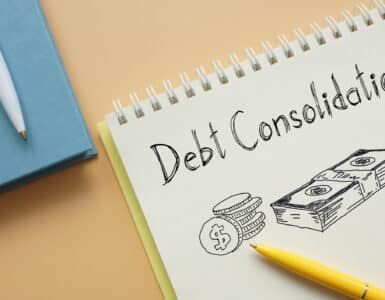
In 2010, there were over 1.5 million bankruptcy filings in the U.S — an 8.1 percent increase from 2009’s numbers. With zero job growth in August and decreased confidence in the economy, I suspect we will see that number tick up again at the end of 2011.
However, if you’re like most people, you don’t read up on bankruptcy for fun — I don’t blame you! It can seem like a complicated issue, but it’s not. To that end, I’ve created a sort of Bankruptcy 101, a crash course in everything you need to know about the subject. Whether you’re considering bankruptcy for yourself or just want to have a better handle on what’s going on when you see it in the news, here is the essential information:
“Chapter 7, 11, or 13? The average consumer considering bankruptcy only needs to choose between Chapter 13 and Chapter 7. Chapter 11 is primarily for debtors who own a business and want to be able to file bankruptcy without putting that business at risk. Also, filing Chapter 11 is expensive—you’ll pay a $1,000 filing fee and a $39 miscellaneous administrative fee, not to mention hefty bills for lawyers.”
That said, when it comes to choosing between Chapter 13 and Chapter 7, here’s what you need to know:
- Chapter 7 bankruptcy is a liquidation plan. To file for Chapter 7 bankruptcy, your monthly income must be less than or equal to the median income for a household of your size in your state. If it is, you can file for Chapter 7, which allows you to liquidate old debts and start from scratch. You’ll lose some, but not all, of your property. Each state has laws that allow you to keep certain things, typically part of the equity in your residence, necessary clothing within reason, a few hundred dollars worth of jewelry, and pensions. The charge for Chapter 7 is $245 for filing fees and about $54 in administrative fees and trustee surcharges.
- Chapter 13 bankruptcy is a repayment plan rather than a liquidation plan. It’s often called a wage earner’s plan because it allows individuals with a regular income to develop a plan to repay all or part of their debts. Basically, you’ll propose a repayment plan to make installment payments to your creditors over three to five years. The plan then has to be approved in bankruptcy court, and if it is, you’ll be able to reschedule secured debts—such as a car loans—and extend them to lower your payments and make them more manageable. Any remaining disposable income must then go toward unsecured debts (credit card or medical bills). In most cases, you don’t have to pay these debts off in full, but any extra money you have will need to go toward them. The charge to file Chapter 13 is a $235 filing fee and the standard $39 for administrative costs.
Credit counseling is a must. If you want to file Chapter 7 or 13, you can’t just do it willy nilly. The Bankruptcy Reform Act of 2005 requires that you go through credit counseling before filing. A good not-for-profit credit counselor will help you figure out if bankruptcy is the best option for you, because it’s certainly not something you want to take lightly. It may be that you can use a debt management program through the credit counseling service to get back on track without having to file bankruptcy. Over the long term, a debt management program will be better for both your credit score and your assets.
There is an effect on your credit history. Bankruptcy is, of course, a big black mark on your credit history, and it will stay on your file for 7 ½ years. But if you come out of bankruptcy determined to stay on track—and follow through—you’ll likely start receiving credit card offers in the mail within about two years. You can boost your chances by making your bill payments on time, keeping your debt low, and not shopping around for credit. You also might consider getting a secured card in the interim. A secured card looks just like a credit card, but you have to make an initial deposit that then becomes your credit limit. Most cards will automatically convert to traditional credit cards after about 18 months of good behavior on your part.
It’s not the end of the world. Kevin Chern, a bankruptcy attorney and president of Total Attorneys, told me once, “Creditors and banks try to create a lot of misconceptions to scare people away from filing, and tell them their credit will be ruined forever. But you have to take a more pragmatic view.” By the time most people file for bankruptcy, their credit score is already trashed, they have a high debt-to-income ratio – one of the primary things lenders look at – and they’ve likely defaulted on more than a few accounts. “After bankruptcy, you have a significantly better debt to income ratio and no outstanding debt. You may actually look like a better risk from an extension of credit standpoint,” explains Chern. That’s not to say you want to file if you can avoid it, but your ability to borrow certainly isn’t gone for good. Most people will start receiving credit card solicitations 18 – 24 months after coming out of bankruptcy.






